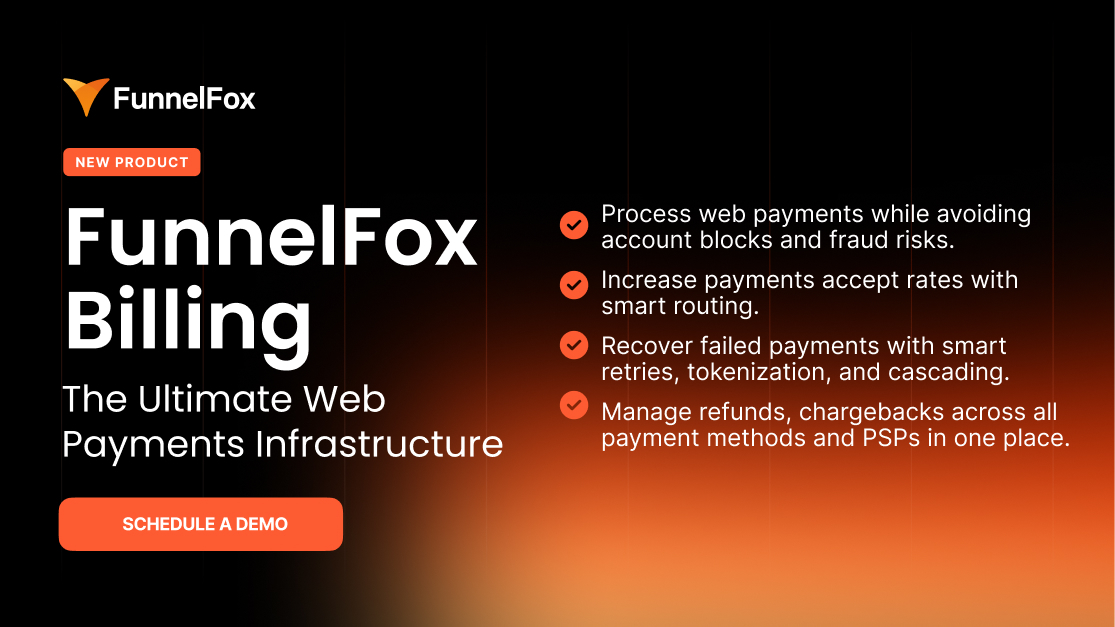Losing paying subscribers always hurts, but losing them to payment failure you could prevent hurts more. That’s involuntary churn.
Involuntary churn happens when a user still wants your product, but the payment bounces: the card has expired, the bank blocks it by mistake, or the app store declines the renewal.
This silent churn can cost your subscription app up to 30% of the monthly recurring revenue. The solution isn’t magic: to prevent involuntary churn, you need to control your payment flows.
Main causes of involuntary churn
Most subscription apps focus on voluntary subscription churn — people who cancel because they don’t see enough value. But involuntary churn is different. It’s purely technical.
Here is what usually causes involuntary churn:
- Expired payment cards. Many users forget to update their card details. When the old card expires, the renewal fails.
- Insufficient funds. Sometimes the charge hits at the wrong time. If there’s not enough money in the account, the payment bounces.
- Fraud filters and bank declines. Banks often block recurring payments they don’t recognize, and Legitimate transfers get flagged as fraud by mistake.
- App store limitations. App stores have strict rules for retries. You can’t control how or when they try again. You can’t notify users easily if the payment failed.
- Missing payment methods. Not every user can or wants to pay by card. If you don’t offer alternatives, you lose revenue.
Whatever the reason, the result is the same: you lose loyal users who wanted to stay, and they may not even know their subscription stopped working.
How to prevent involuntary churn?
1. Check your gateway setup
You’ve got a modern gateway with retries, fallback routing, tokenization. Nice.
But they don’t run themselves — most default configs do the bare minimum: one retry, no smart fallback, tokens that expire quietly. Meanwhile, every gap feeds hidden declines, and you get hidden churn nobody flags until your MRR dips.
What to do:
- Refine your configuration: add enough retries, test fallback routes, and enable auto-updates for tokens.
- Run real test charges — cards, regions, currencies.
- Simulate failed payments to see if your setup really catches them.
- Re-run the whole test suite after every major release, no exceptions.
2. Build smart retry rules
One failed charge doesn’t mean the user is gone. Maybe their card is empty today, but full tomorrow. Smart retry rules catch these soft declines automatically, without bothering users with awkward emails.
What to do:
- Set at least three retries across seven days.
- Set multiple retries with dynamic timing: try on payday, different days, different times.
- Measure recovery — smart retries can recover up to 30% of failed payments.
3. Remind users before cards expire
Expired cards cause up to 50% of failed payments — classic soft decline. Some apps just wait for the charge to fail and then chase the user afterward, and smart ones catch it before it happens.
What to do:
- Trigger in-app banners 30 days before the card expiration date.
- Add push or email if needed — but catch them while they’re active.
- Keep the card update flow quick and easy.
4. Automate failure alerts
When a payment fails, speed is everything: the faster you act, the more you recover. Same-day alerts catch soft declines before users forget or switch cards.
What to do:
- Use real-time triggers from your payment processor.
- Send a clear message with a one-click link to update payment details.
- Mix channels: in-app banner, email, push, SMS.
5. Offer a grace period
Most failed payments aren’t intentional, just expired cards or not enough funds for a day. Cut someone off fast, and you push them to churn.
Better option: give them a short grace period — a simple move that strengthens your anti churn strategy. This way, you keep trust and give users time to clear up payment issues without feeling shut out and looking elsewhere.
What to do:
- Add a grace period for failed payments.
- Show a countdown in-app — people act faster when they see time running out.
- Limit features step by step if the payment isn’t recovered.
6. Expand your payment options
Not everyone can pay by card. In many markets, local payment methods beat cards for approval rates. Ignore them, and you lose paying users who won’t switch banks just for you.
Adding local payment options closes that gap and can lift approval rates by 20% overnight, especially in LATAM and APAC.

What to do:
- Offer global payment methods like PayPal or Apple Pay.
- Add local alternatives like PIX in Brazil or PayNow in APAC.
- Local options boost approvals instantly.
7. Orchestrate payments
Payment orchestration means using multiple processors and routing each transaction through the best one.
One provider rarely covers every market well. Cross-border? Weird local acquirers? Fallback routing saves failed payments that one gateway alone can’t catch.
Set routing rules by region, card type, or success rates. Modern tools like Primer let you do this with no code.
What to do:
- Audit where payments fail most.
- Add a second processor for high-fail regions.
- Set fallback routing for declines.
8. Own your tokens
If your payment processor stores your tokens, it owns your users.
A processor-independent vault lets you switch providers without losing billing: when cards expire, payments keep flowing. You can also add network tokenization on top — it auto-updates expired cards and saves approvals.
What to do:
- Store tokens outside your processor if possible.
- If your processor supports it, enable Visa and Mastercard network tokens to auto-refresh cards.
9. Fix your dunning
Dunning helps you prevent involuntary churn and keep the churn rate low. When set up well, it can recover 70–80% of failed payments.
If you use services like Stripe, Recurly, or Chargebee, dunning comes built-in — just make sure your reminders, timing, and retry rules are tuned to catch failed payments fast.
Remember: automated flows handle the basics, but some accounts still need a human touch. Your support team should be ready to step in.
What to do:
- Measure your dunning recovery rate monthly.
- If it’s below 70%, rewrite messages, test new channels, and bring in support when needed.
💡 Don’t set it and forget it. Preventing involuntary churn isn’t a one-time setup. You have to keep an eye on failure reasons, approval trends, and retry performance; run A/B tests regularly; and refine your strategy based on real-world data.
Prevent involuntary churn with FunnelFox Billing
FunnelFox Billing puts all the best anti-churn practices on autopilot for you.
Instead of juggling multiple tools and fixes, you get a unified platform that handles retries, routing, tokenization, and revenue recovery, so your team spends less time on payment ops and more time growing your business.
Every layer is optimized for conversions, so you keep more recurring revenue with zero manual effort.

Final thoughts
Retention beats acquisition, every time. Every failed payment you recover is pure profit back in your pocket. The steps aren’t rocket science: smart retries, clear reminders, better payment options, and fallback routes. The challenge is doing them right, fast, and at scale.
For any subscription business, involuntary churn is just waste you can fix, and you don’t need a giant team or heavy custom code to get there. With the right tools, you can control how you charge, how you recover, and how you keep more revenue where it belongs: with you.









